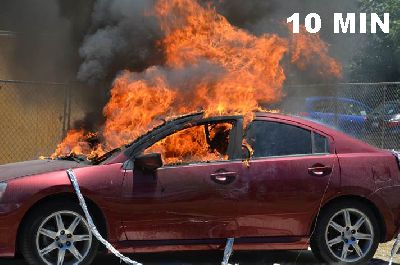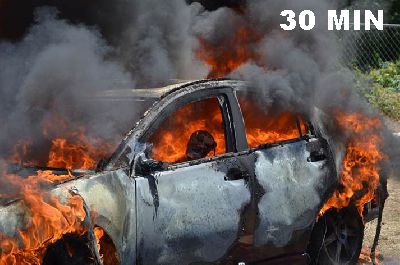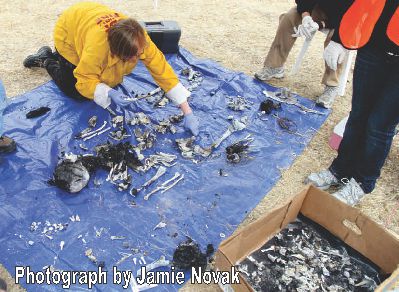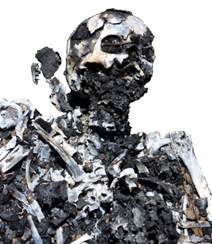Burned Bone
 |
 |
 |
After a devastating fire when the body is considered “burned beyond recognition” it still retains valuable information about personal identification, patterned burn damage, and in some cases, evidence of preexisting trauma. Dr. Pope specializes in the analysis of burned human remains that result from structural (residential/manufactured home), vehicles, confined space, and outdoor fire scenes. Each type of fire environment is unique and produces specialized burn patterns to the body. Dr. Pope has been researching burned human remains for over 20 years and collecting data from an ongoing annual Fatal Fire Death Investigation Course in San Luis Obispo, California since 2008, which provides realistic scenarios for different types of fire scenes involving burned human remains at fatal fire scenes (www.slofist.org). Data from over 170+ bodies from this course includes time, temperatures, and photographic images of each burn event and the resulting condition of the body. Burn patterns are affected by variables of the duration, fuels involved, type of fire environment, orientation of the body to heat sources, and suppression techniques. Experimentally burned bodies range from superficial burn damage (within minutes) to more advanced tissue damage with longer durations resulting in charred skin, subcutaneous fat, muscles, burned bones, and teeth that survives as evidence of the victim’s body after the fire.
{modal images/pugpos.png|title=Process of Pugilistic Positioning}
 {/modal}
{/modal}
The process of pugilistic positioning during the fire with the fingers, wrist, elbow, and shoulder repositioning from
shrinking muscles that pull on bones, thus moving the limb.
Just as each case is unique, so are the burn patterns that are produced during the continuum of heat-related changes that occur to the human body during a fire. The burn patterns tell a story about how the body burned, which can include information about the duration and/or temperature ranges, fuels involved, fire environment (indoors vs. outdoors), and the resulting burn patterns to different tissues of the body (soft tissues and bone) and includes heat-related color patterns and heat fractures that develop during the fire. After the fire these burn patterns in the different soft and skeletal tissues survive as physical evidence that convey how the body burned.
{modal images/gallery/inv1l.jpg|title=Investigation Process}  {/modal} {/modal} |
{modal images/gallery/2body.jpg|title=Fragmented Body} {/modal} {/modal} |
|
Above are examples of burned and fragmentary remains from a vehicle fire that lasted for hours, leaving burned bone as evidence of the body. (Left) Photograph by Jamie Novak |
|
